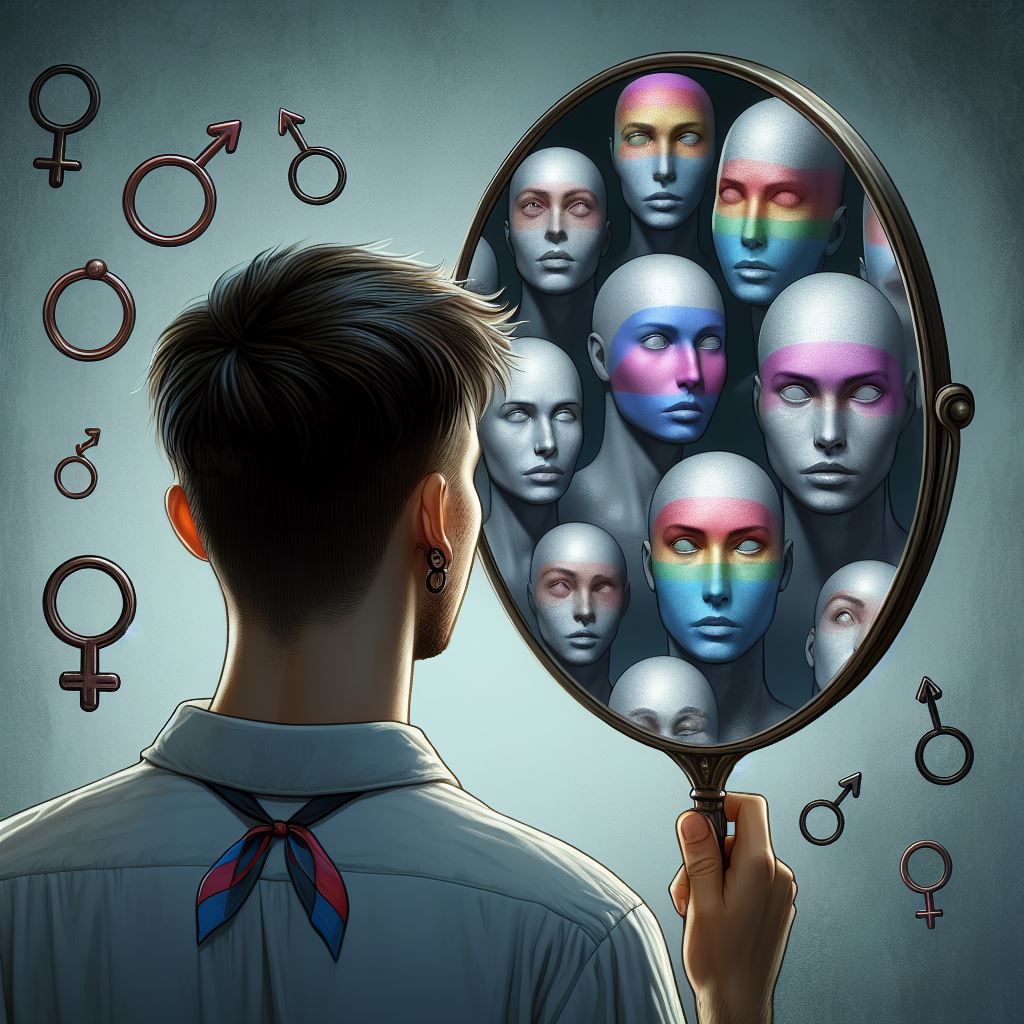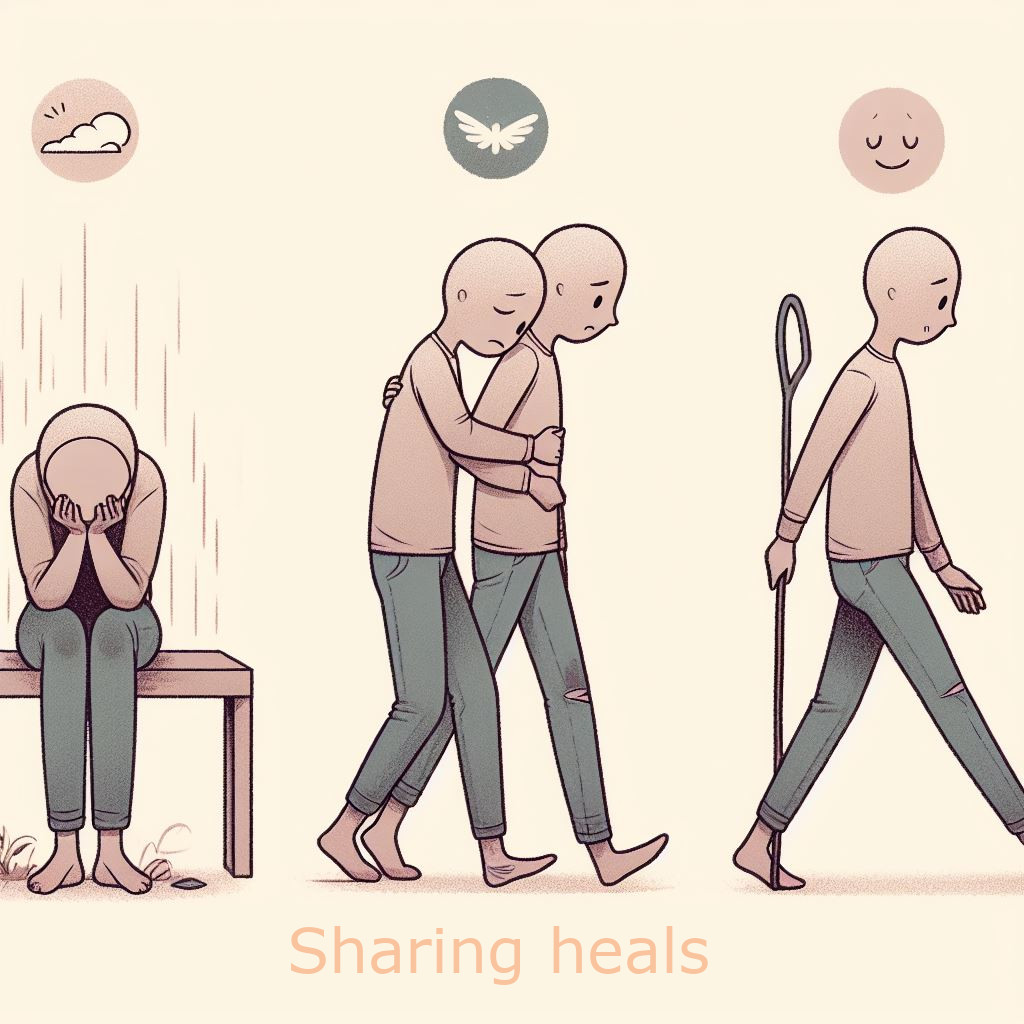This is one of the most common questions that we are asked on the subject. So, here is another attempt to answer in a meaningful and intelligible way. Hopefully we managed, let us know!
Intro
This post is adapted from an answer to the Quora question: What Is dissociative Identity disorder?
Firstly, instead of talking strictly about DID, I would like to include the whole dissociative spectrum included in the Theory of Structural Dissociation. That encompasses a great deal of diagnoses. We have written in the past how diagnoses changes, so we are a little reticent using a specific condition’s name.
For example, we recently explained how when having OSDD it is quite possible to present as all four different types at different stages, so we prefer to discuss in terms of degree of dissociation, i.e. whether it is primary, secondary, or tertiary. We also wrote in the past how we believe that masking can cause an additional special type of dissociation, although this is not recognised as a factor in the official theory, we do take it into consideration when dealing with other plurals.
Stepping outside the box
Earlier, one of our systems answered a question and explained structural dissociation from an endosymbiosis POV (yes sometimes we struggle in understanding how kids can reason as our inner children do!):
To understand that [plurality], it is important to understand the concept of endosymbiosis, but we need to move away from biology and think of consciousness instead.
We believe that an endosymbiotic relationship is not triggered by biological needs, such as food. Instead, it is driven by consciousness as a direct attempt to form a network and exchange resources. I.e. as a social/consciousness-driven solution to a biological requirement.
We also believe that it is exactly this process that contributes to the formation of a whole identity by consolidating disparate reactive action systems into responsive, integrated, coordinated solution providers.
For example, a child that cries when hungry shows a very basic reactive relationship between the system that detects hunger (itself made up of several subsystems distributed throughout the body) to trigger the action of looking for help, i.e. crying. While initially, this connection might be involuntary, with learning the child can manipulate the process of crying for help achieving positive outcomes in many diverse situations (with a bit of luck!). That awareness integrates the two (and more) systems through thought processes that become more and more conscious as epigenetic knowledge increases.
The earlier this process of identity endosymbiosis is interrupted, the greater the fragmentation.
Source: Quora
Back in the box of Structural Dissociation
Stable attachment
Effectively, if the parents respond consistently when a child cries for different reasons, this will enable the kid to form a consistent sense of self. I.e. When I need my parents they are available.
There may be some exceptions, but these too are clearly laid out. So, a child may not get attention when adults are speaking among themselves, and that is taught as a rule to be polite and not intruding into conversations.
Secondary and tertiary dissociation
However, if the child receives conflicting responses, this consolidation cannot happen. So there may be other patterns that a child can identify. For example when dad is drunk this happens, when mom is angry that happens, when the neighbours look after me this happens … These will cause the formation of multiple “identities” each with the knowledge and experience to deal with a specific type of situation.
Complexity …
In more extreme cases, where not even those patterns are identifiable, we end up having fragmented system. That means that each situation can have a random number of responses and the “collective” persona will try and find the most suitable one to deal with the situation.
In fragmented system, you can have someone that is in charge of talking with a specific person. Nothing else. So they need to be paired up with others with compatible capabilities that can function in a specific situation.
So, for example, you can have a person that talks to dad, one that talks to mom, but you may have a single person that cooks. In which case you would have what we call microswitches where an alter is cooking, but the speaking alters switch depending on who they are conversing with.
The degree of complexity can grow exponentially with fragmented systems. but the solution is always one: Communication.
Healing
🧭 You may find this post relevant: How to Accept Adapt Advance, Learn, Encourage Empower Enable
Internal Family System as mentioned in the other answer is an excellent tool to facilitate communication between different members of an internal family. However, I believe that the challenge in finding a therapeutic approach is that in a plural there are many different conditions, types of traumas, histories, experiences, etc. and what works from someone does not work for someone else.
In our system, for example, the kids respond to play therapy, but an adult or even a teen would not engage in something like that. Someone may benefit from EMDR, while others might not. CBT could be a better option for some sys members while DBT would be for others, while a Gestalt or an integrative one may be better suited to someone else.
Here are some real-life examples in a system:
- A host has likely not lived through any specific past trauma. However, helping the inner fam dealing with their issues is rather traumatic. This determines the kind of help they need, which is more related to being a carer.
- A survivor will need different help, even if we don’t delve into the trauma and just focus on developing a new identity, their support requirements are different for each of them.
- Someone who has learnt to avoid emotions to be functional will need a type of therapy more aligned with enabling them to discover and validate their emotions.
- Etc. The larger the system and the earlier the ACEs, the more complex will the therapeutic requirements be.
I will stop now, don’t want to be exceedingly boring. I hope this helps a little in understanding dissociative disorders. 🩵
References
- Ella Harris’s answer to What Is dissociative Identity disorder? in The Psychology Behind Personality Disorder
- Structural Dissociation | DID-Research.org
- AG’s answer to Can you describe the experience of being a host in an OSDD system? Is there a noticeable difference between being a host and other alters? How does it compare to different types of system? in ALTERnate REALity
- Primary Structural Dissociation | DID-Research.org
- Secondary Structural Dissociation | DID-Research.org
- Tertiary Structural Dissociation | DID-Research.org
- AG’s answer to Does masking make you feel dishonest sometimes? in Stop ADHD/Mental Health Stigmatization
- Experiences: Masking Induced Structural Dissociation – ND UK
- Teo and Alex AG’s answer to Who are you? What is your real purpose? in ALTERnate REALity
- http://endosymbiotichttps/biologydictionary.net/endosymbiotic-theory/
- http://ifs-institute.com/resources/articles/internal-family-systems-model-outline





Comments are closed